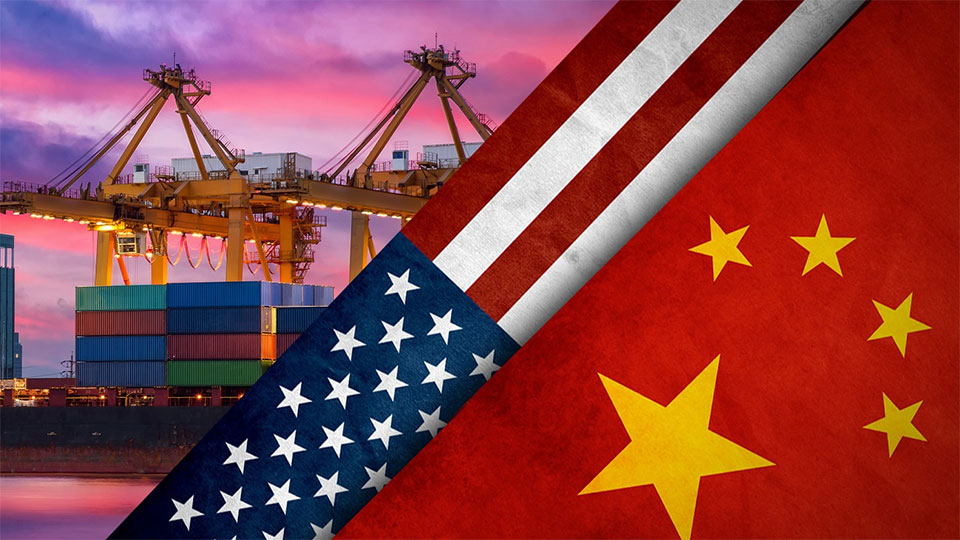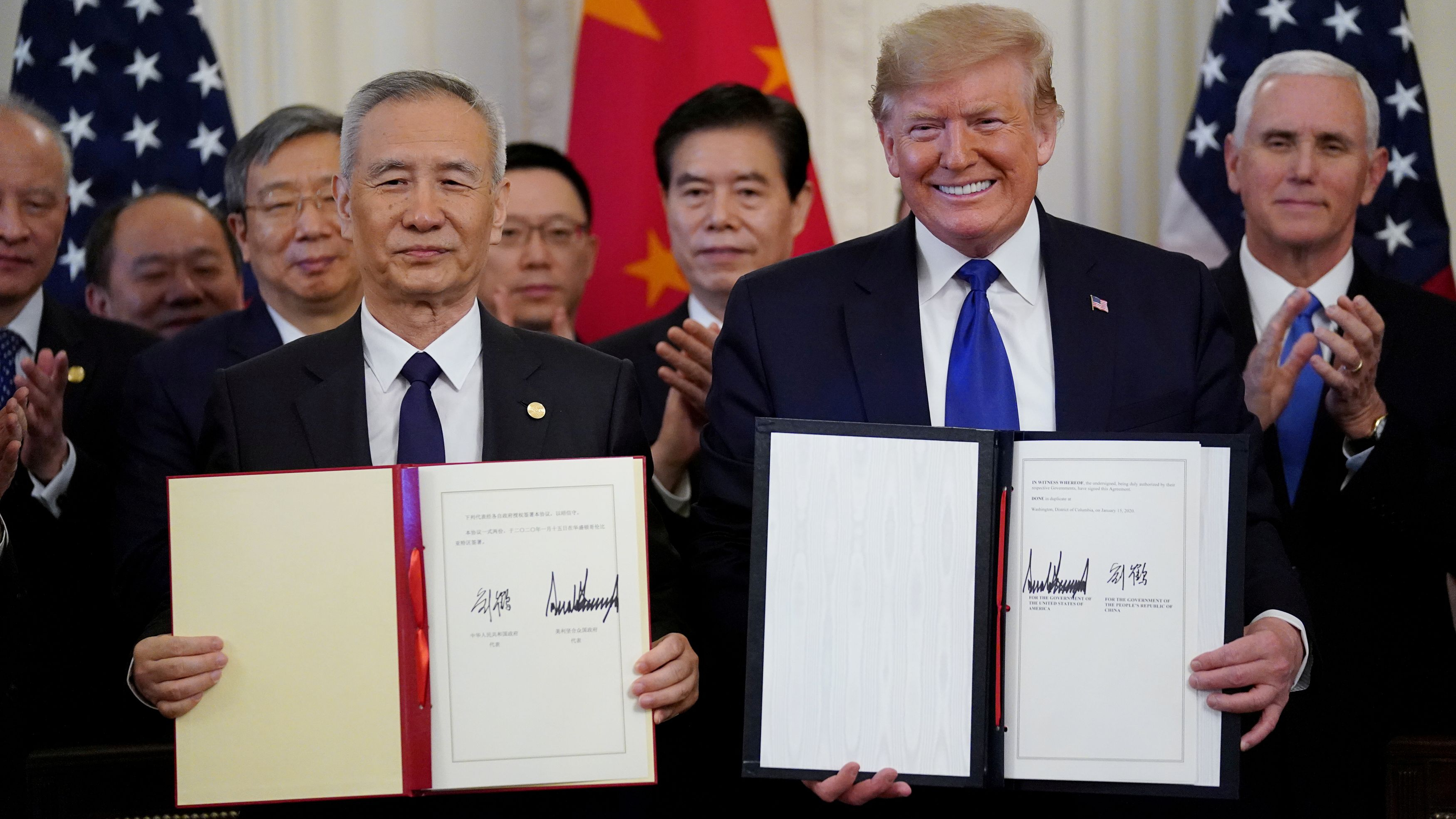
Editor's note: Kong Qingjiang is the dean of the School of International Law at the China University of Political Science and Law. The article reflects the author's opinions, and not necessarily the views of CGTN.
After 13 rounds of negotiations in order to end the bilateral trade standoff, China and the U.S. signed a phase one agreement on January 15, marking a new phase in China-U.S. trade relations.
The phase one agreement concerns China's commitment to large-scale purchases of American products valued at 200 billion U.S. dollars and expanded market access. China's commitments will help reduce the huge U.S. trade deficit in the short term. This agreement is the best that China can reach against the background of imbalance in Sino-U.S. trade and the bargaining power of the two sides, and it is also an agreement that China has to accept.
For China, although the agreement is far from desirable, having it is better than nothing: Reaching the agreement is beneficial to the country in that it provides external leverage for the Chinese government to promote and deepen reforms, and especially increase the predictability of the trading environment, which is instrumental to trade growth.
However, the trade relationship between China and the U.S. will not go smoothly as might be expected for the following reasons:
The first is the negative impact of existing U.S. tariffs on China. In the phase one agreement, the U.S. did not promise to cancel tariff measures that have already been imposed upon about 350 billion dollars-worth of Chinese products. Obviously, the U.S. is maintaining the tariffs as a means to pressing China to honor the commitments in the agreement. The elimination of tariffs may also be used by the U.S. as a means of rewarding China for fulfilling the agreement.
In other words, China's implementation of the agreement is a condition for the cancellation of tariffs. Moreover, U.S. President Donald Trump's speech delivered after the phase one agreement was signed vowed that the U.S. would not cancel tariffs until the two parties reach a phase two agreement, which actually shows that the U.S. regards China's implementation of phase one agreement as a sine qua non rather than a sufficient condition for tariff elimination.
In other words, fulfilling the phase one agreement alone cannot meet the conditions for tariff cancellation by the U.S. Since there is no timetable for the conclusion of phase two agreement, it also means that there is no timetable for tariff removal.
The existence of huge tariffs adds great uncertainty, which not only means a continuing negative impact on trade, but also the potential to trigger the escalation of existing or new trade disputes.

Chinese Vice Premier Liu He (L) stands with U.S. President Donald Trump after signing the China-U.S. phase one economic and trade agreement in the East Room of the White House in Washington DC, U.S., January 15, 2020. /Reuters Photo
Chinese Vice Premier Liu He (L) stands with U.S. President Donald Trump after signing the China-U.S. phase one economic and trade agreement in the East Room of the White House in Washington DC, U.S., January 15, 2020. /Reuters Photo
Second, the possible attitude of the U.S. after the phase one agreement also matters. It is foreseeable that the conclusion of the phase one agreement will lead the Trump administration to rely on this method when dealing with Sino-U.S. trade friction, thus forcing China at any time to make further concessions, especially in regards to rule making.
On the other hand, among politicians who have a more aggressive policy towards China than Trump, the phase one agreement means that the Trump administration has given up legitimate claims made in the past three years. Under domestic political pressure, it is likely that the Trump administration will keep up its own pressure on China. In both cases, the U.S. may use any economic and trade policy tool authorized by its domestic law in an unscrupulous manner.
Thirdly, it is difficult to attain the U.S. goals after the phase one agreement. According to the seventh Joint Statement between the U.S., Europe, and Japan released before the signing of the agreement, the goal of the U.S. is, in addition to ensuring the implementation of market access in the phase one agreement, focused on rule making.
The phase one agreement already contains some rules, mainly those for intellectual property protection, but absent are more new rules. It is likely the U.S. is aimed at setting rules on non-market-oriented policies and practices, including large-scale market subsidies. Most likely, new subsidy rules and state-owned enterprises (SOE) are to be targeted.
For China, it is more difficult to accept and formulate rules against it than to make market access commitments. It is even more difficult to formulate subsidy and SOE rules than intellectual property rules, because stronger intellectual property protection is not only demanded by the U.S., but also inherently needed out of China's innovation-driven model for its economic development. Meanwhile, the making of proposed new rules, which contravene the current economic policies and practices, provide no incentive to China. It is conceivable that difficulty that lies in the next stage of negotiations might lead to the escalation of disputes or the uncovering of fresh disputes.
Therefore, letting the above factors not adversely affect the implementation of the phase one agreement is what the two sides are supposed to do. For the interest of both China and the U.S., the good faith of both sides is what is needed for a smooth implementation, which itself is a prerequisite for an earlier end to the trade war between the two countries.
(If you want to contribute and have specific expertise, please contact us at opinions@cgtn.com.)